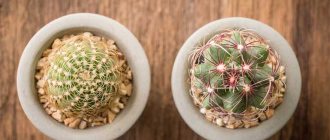Tulips (lat. Tulipa) are a perennial herbaceous bulbous plant. Belongs to the family Liliaceae. These are probably one of the most popular garden flowers in our country. Today tulips grow in almost every flower bed. And this is not surprising, because in nature there is more than 80 types this beautiful plant, and is cultivated by humans for about 10,000 varieties!
Under natural conditions, tulips grow in mountains, steppes and even deserts. These are ephemeral plants - they are characterized by a very short growing season. And they survive unfavorable times - drought, cold - in the soil. Varieties of tulips abound in sizes, shapes and colors: large, dwarf, simple, double, fringed, lily-flowered, black, blue, variegated... The list can be endless.
Experienced gardeners successfully grow tulips not only in the garden, but also indoors. These flowers are an excellent gift option. But often the heroes of the occasion are perplexed as to what to do with this unusual beauty and how to preserve it.
Variety selection
Not all varieties are suitable for forcing in water, so when purchasing bulbs, look for the corresponding designation on the packaging. Tulips from the Darwin hybrids and Triumph groups are usually suitable:
- Maureen;
- Forgotten;
- Dream;
- Parade;
- Record.
For the middle forcing period (February-March) the following varieties are used:
- Diplomat;
- Oxford;
- Vivex;
- Kis Nelis;
- Eric Hofsier;
- London.
Choose only healthy and large seed material.
We grow tulips at home in winter. How to do it?
You can grow such a bouquet by a certain date. For example, by March 8th, when flowers are especially popular among us. I also think it will be nice to receive live tulips for other winter holidays. The process of growing such a bouquet can be easily regulated. You can speed it up, or you can slow down the pace of cultivation a little. Everything here is regulated quite simply.
How to plant tulip bulbs?
We will plant tulips in a pot. Any will do. The size of the pot is up to you to determine. It all depends on what size “living” flower bed you want to end up with. You can use any soil to fill the pot. When you fill the pot with soil, you can plant tulip bulbs there. They do this very tightly, that is, they press the bulbs almost end to end. You can even plant them in two tiers, again still close to each other.
If you take a small pot, then you can plant about 20 bulbs in it. After planting is completed, the bulbs are watered, and the pot itself is then placed in a plastic bag. Next, right in this bag, the pot will need to be placed in the refrigerator. Find a place for it on the bottom shelf. You shouldn't forget about him. Remove the bag from the pot periodically, do not let the soil become moldy. But you also don’t need to let it dry out. Timely watering is also very important here.
How to grow?
After spending a couple of months in the refrigerator, the tulip bulbs will take root well, and you will see the first shoots, which by that time will appear from the ground. Now, it’s time to take the pot out of the refrigerator and put our tulips out for “forcing.” In the warmth, the sprouts will quickly grow. This growth will not occur due to active photosynthesis or any additional nutrition, but due to the nutrients that are present in the bulbs themselves. That is why this process was called “forcing”.
How quickly your tulips will grow is up to you to decide. This can be adjusted very simply. If we take the average, it’s about 2 or 2.5 weeks. During this time, on average, a good bouquet grows. But, if you need to speed up this process, for example, by a certain date, then you need to place the pot of tulips in a warmer place from the window. There they will bloom much faster. And when timing doesn’t matter, then let the pot stand in a cooler place. Then the tulips will bloom much later. Here you should know that flowers that developed more slowly will be stronger than those whose growth you accelerated. Accordingly, such tulips will also last longer in a vase.
When the holiday comes, you can cut the tulips and give them to the person for whom you grew these flowers. Let this person appreciate your efforts and enjoy the winter tulips. But, you can give flowers directly in a pot, that is, without cutting them. Just like tulips, you can grow other small-bulb flowers at home. For example, crocuses, and besides them Pushkinia or Scylla. These flowers, after being in the refrigerator, bloom even faster. Even in less than 7 days. This way you get a bright, vibrant flower garden at home that will grow right before your eyes.
This video will also help you grow tulips in winter at home. Here you will also be shown several ways to do this. Let's see.
What conditions are needed for growing?
The peculiarity of the bulbs is that they are not capable of physiological inactivity. This means that they require constant air exchange and a certain humidity. Until sowing, they are stored in a dry, well-ventilated area at a temperature of +20°C and a humidity of 60–70%. During this period, a flower primordium is formed in the bulb.
In mid-October, the air temperature should be reduced to +17°C. From this moment you need to begin pre-planting autumn preparations. It consists of treating the bulbs with cold. By the time such influence begins, the future plant should be fully formed in it.
The cooling process is called distillation. For early flowering varieties it should be 16 weeks. To begin with, the bulbs are placed in the soil.
The composition of the mixture may vary:
- clean river sand;
- combination of sand and peat;
- only peat;
- sand with garden soil.
Did you know? Tulips grow even after they are cut and placed in a vase. The bouquet may well grow by about 5 cm while it remains indoors.
Some gardeners advise using 2 parts garden soil, 1 part compost and 1 part clean sand. Add 50 g of ash to the mixture. Stir. Fill the pot 2/3 full, plant the bulbs and add soil. After planting, water with a pale solution of potassium permanganate. Then the containers are transferred to a cool place with a temperature from 0°C to +10°C. This phase will take about 4 weeks . After which the air temperature near the containers is lowered to -2°C and covered with film to avoid excess moisture loss.
As soon as the roots grow, the tulips are returned to a warm room. For the first few days, the lighting should be dim and the temperature should be around +12°C. Plants can even be shaded to prevent them from stretching out. Lighting and temperature are gradually increased . The seedlings will need to be watered regularly and provided with a suitable microclimate for growth.
Selection of capacity
The best pot is considered to be a container in the form of a dish . It looks very decorative. But bulbs also grow well in pots. Any portable container should have a drainage hole to ensure good air circulation for the bulb. Sometimes tulips are planted in baskets. This is also convenient in its own way.
Find out also how to grow tulips in a greenhouse by March 8th.
Soil composition
Neutral or alkaline soil is ideal for tulips. They prefer soil rich in organic compounds . Adding organic matter is necessary to clay or sandy soils, as they are poor in nutrients. You can find one at your local garden center or make your own.
The following combination is suitable for indoor tulips:
- sphagnum moss at the bottom of the pot;
- rich fertile soil from about the middle to the end of the pot.
Well-drained soil can pass a large volume of water . Poor quality soil does not allow water to pass through well, which means it does not ensure proper growth and cultivation of the plant.
Did you know? Most tulips produce one bud on one stem. But several varieties can have up to four of them on one stem.
Temperature, humidity and lighting
The temperature regime depends on the stage of development of the bulb . So, after collection or purchase and until forcing, the temperature should be maintained at +20°C and humidity 60–70%. Then it is reduced to +17°C, the bulbs are planted in containers and taken to forcing at temperatures from 0°C to +9°C. After distillation, the temperature regime is gradually restored to +20°C. And they maintain it until cutting or the end of the growing season.
Preparing the bulbs
For successful forcing, tulip bulbs must go through a stratification procedure. There are two ways, which we will discuss below.
If you bought already prepared chilled bulbs, then after planting in pots and rooting they do not need to be in the refrigerator or basement - they are immediately placed in room conditions.
Option #1. Long-term cooling 100-130 days
To receive flowers by the desired date, you can calculate the required deadline in advance. How to carry out this stratification:
- The bulbs are sent to the basement or other room with a temperature of about +9 degrees. There should be no sharp fluctuations.
- Humidity in the room is about 75-80%. At the same time, condensation must not accumulate on the bulbs.
Option #2. Short cooling
For this purpose, a special refrigeration chamber is used. The temperature in it should be about +5 degrees. Stratification period is 45 days.
Without exposure to cold, growth and development of the aerial parts and the appearance of buds cannot be achieved.










